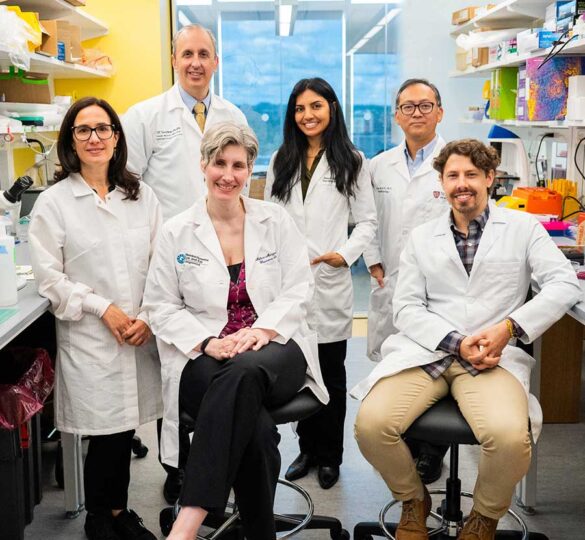Catalyst for a Cure: 2025 Research Progress Report
Glaucoma Research Foundation is currently funding two multi-year Catalyst for a Cure research teams.

Catalyst for a Cure (CFC) is an interdisciplinary approach that demonstrates the power of collaboration in scientific research. This research is crucial for patients because Catalyst for a Cure investigators are pioneering new types of treatments for glaucoma.
CFC3: The Catalyst for a Cure Vision Restoration Initiative principal investigators are Xin Duan, PhD (UC San Francisco), Yang Hu, MD, PhD (Stanford University), Anna La Torre, PhD (UC Davis), and Derek Welsbie, MD, PhD (UC San Diego).
By pooling their expertise and resources, the CFC3 investigators explore multiple avenues of research simultaneously, including retinal ganglion cell (RGC) transplantation, neuroprotection, and optic nerve regeneration. Research on RGC transplantation could lead to methods that restore vision by replacing damaged cells, offering hope for patients who have lost vision due to glaucoma. Strategies to protect and regenerate optic nerves could prevent vision loss and potentially restore connectivity between the eye and the brain. The team is testing multiple neuroprotective molecules in combination, which may lead to more effective treatments.
CFC4: The Melza M. and Frank Theodore Barr Foundation Catalyst for a Cure Initiative to Prevent and Cure Neurodegeneration principal investigators are Sandro Da Mesquita, PhD (Mayo Clinic), Milica Margeta, MD, PhD (Mass Eye and Ear), Karthik Shekhar, PhD (UC Berkeley), and Humsa Venkatesh, PhD (Brigham and Women’s Hospital).
The CFC4 researchers have identified specific immune cells and molecular pathways that play a role in multiple neurodegenerative diseases —Alzheimer’s, glaucoma, and glioma. This discovery opens possibilities for developing new treatments by targeting these cells and pathways. The CFC4 research team plans to continue testing potential therapeutic candidates that might reduce inflammation in the brain and eyes, which could be a new way to treat diseases like Alzheimer’s and glaucoma.
Article posted on July 29, 2025